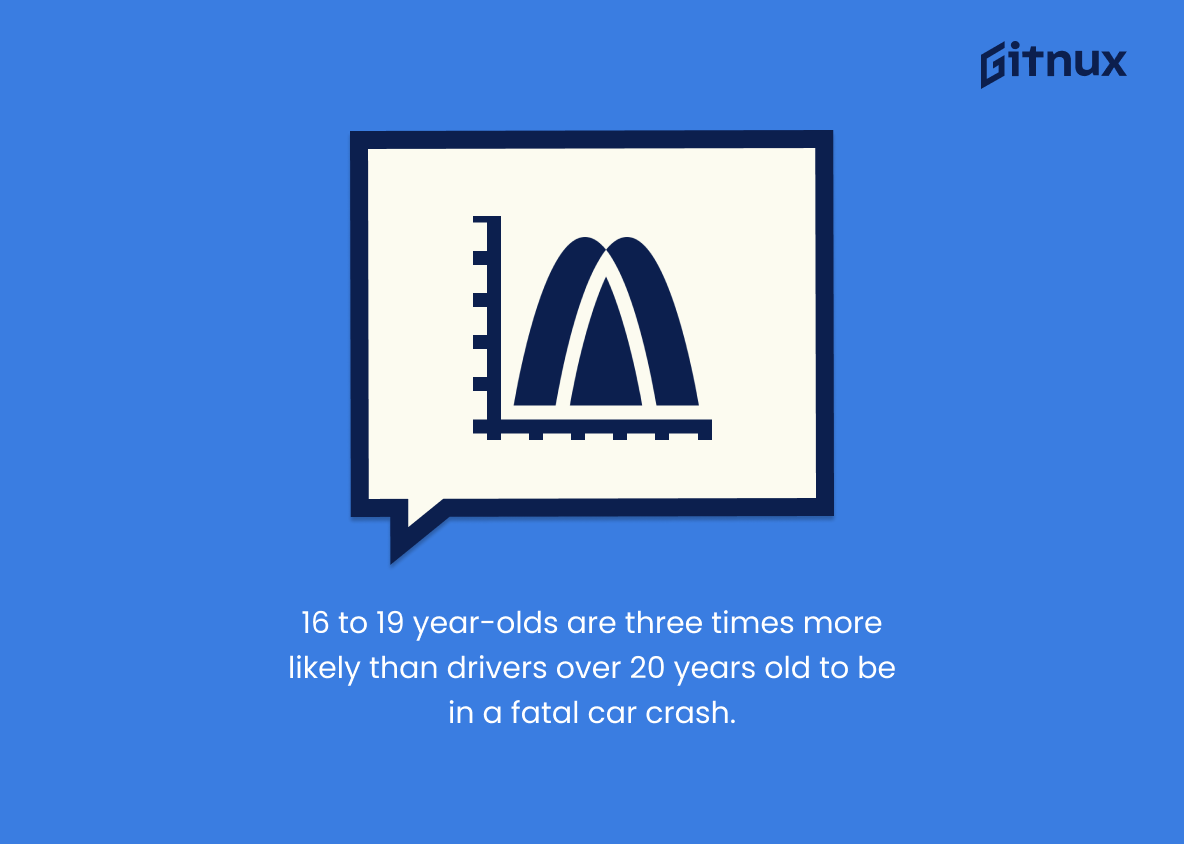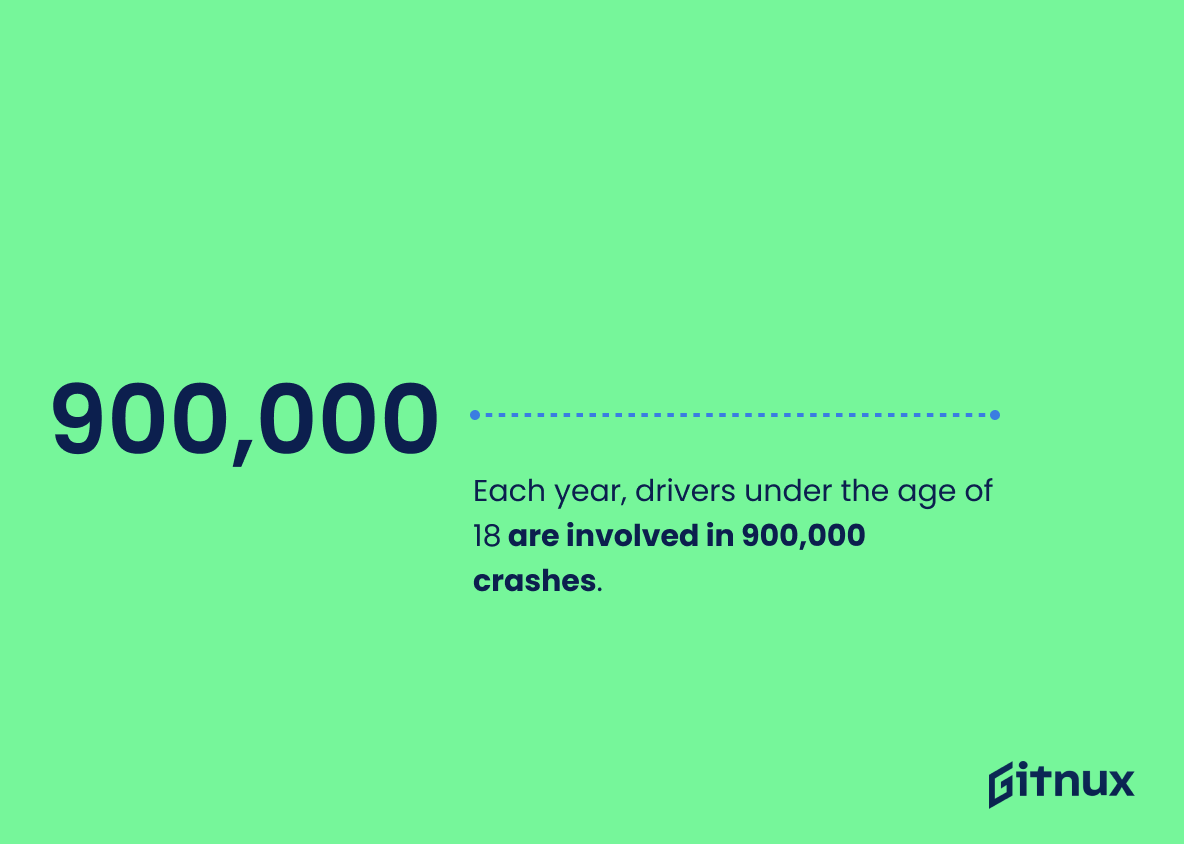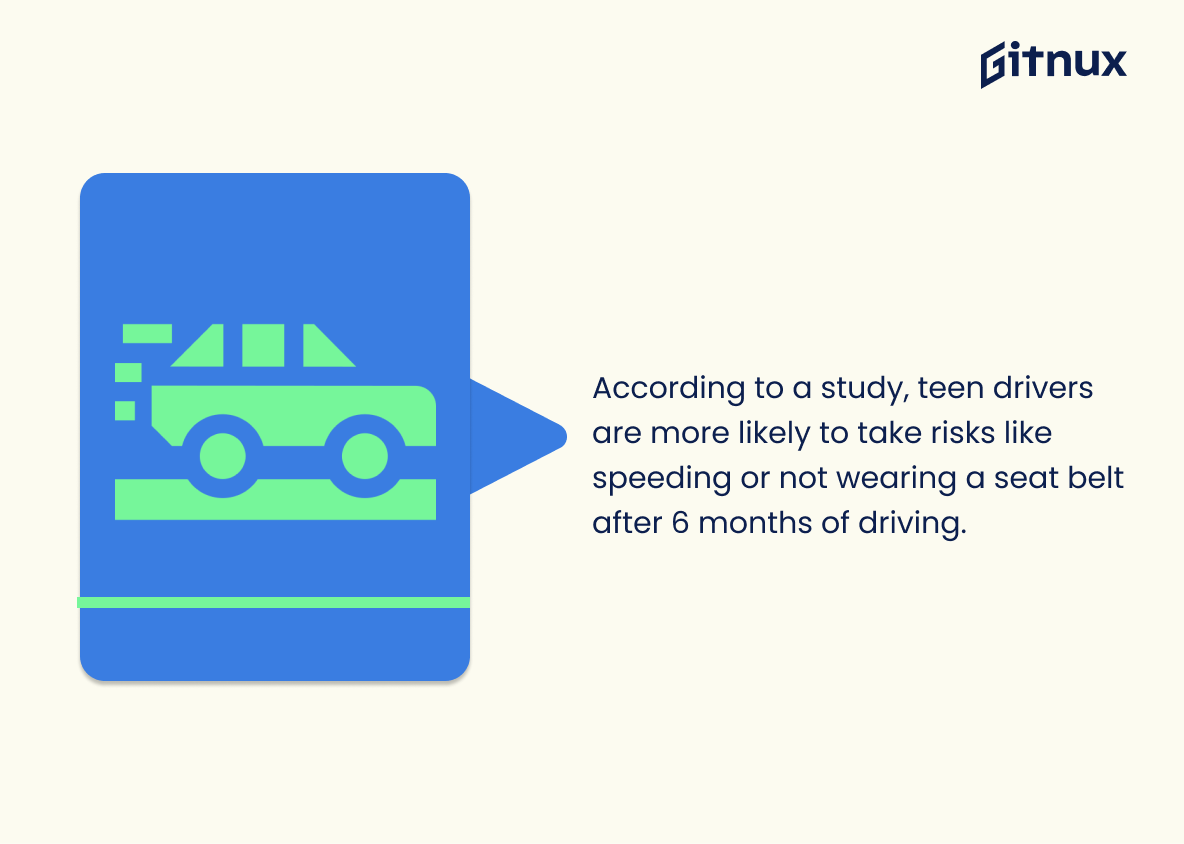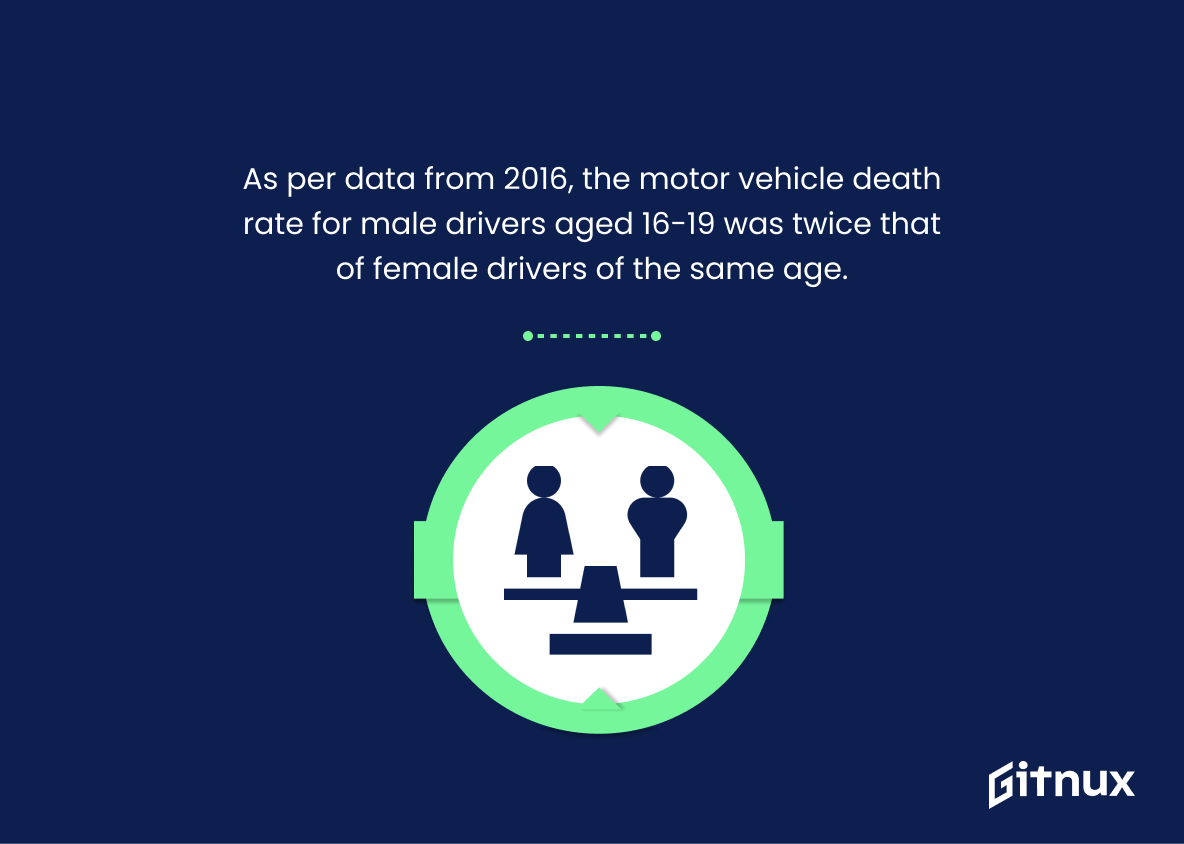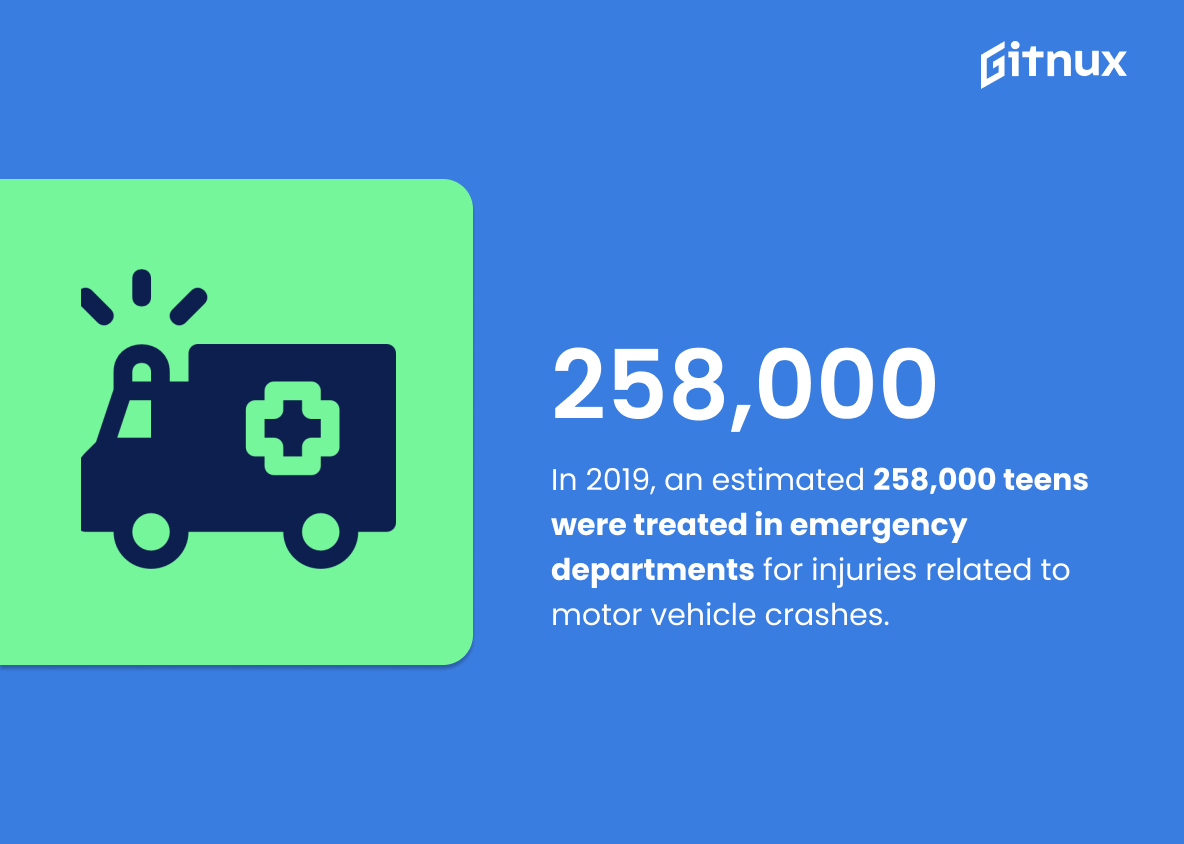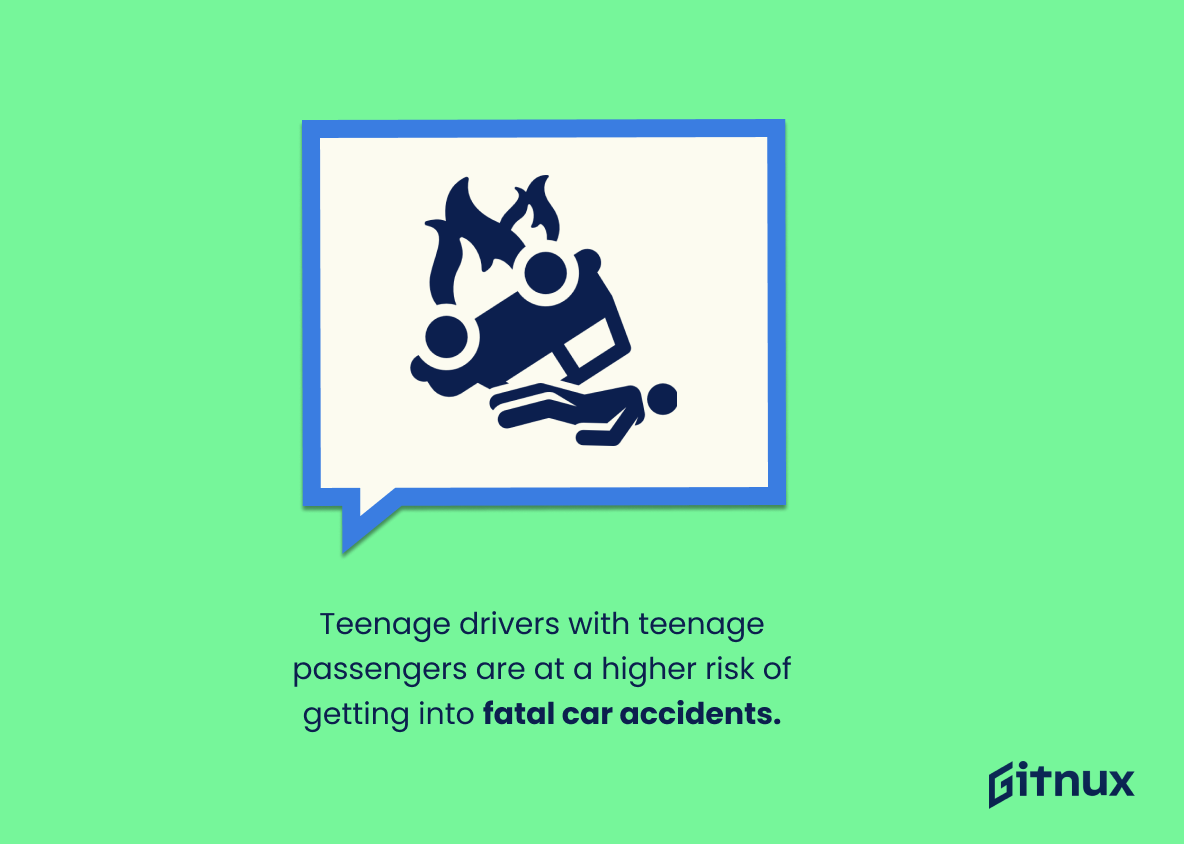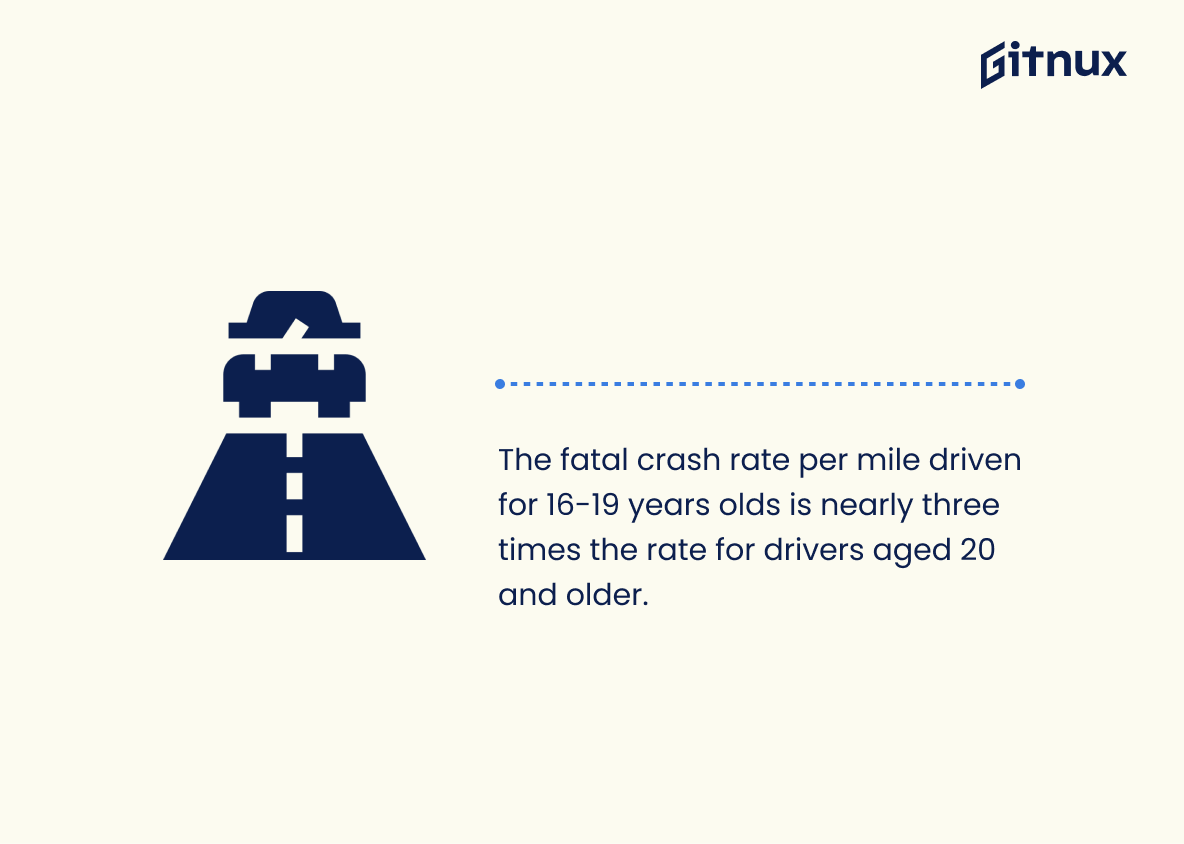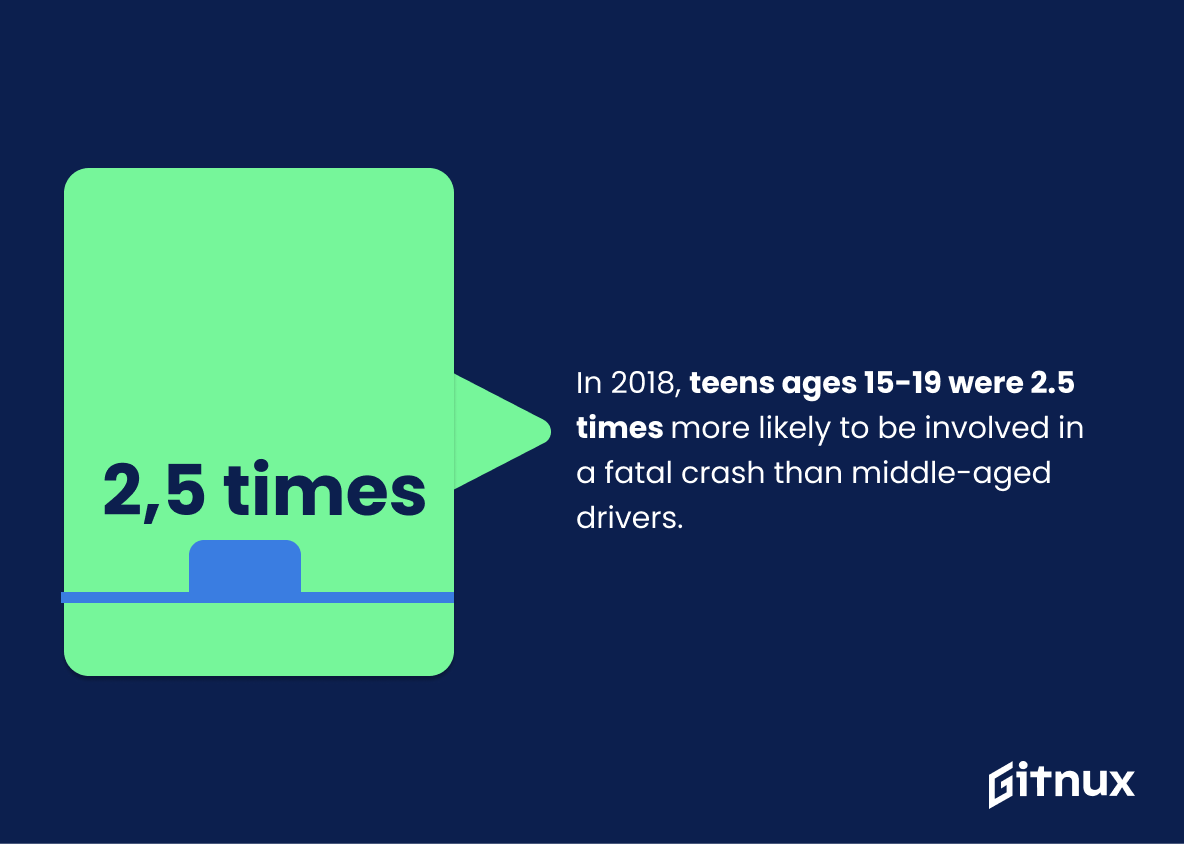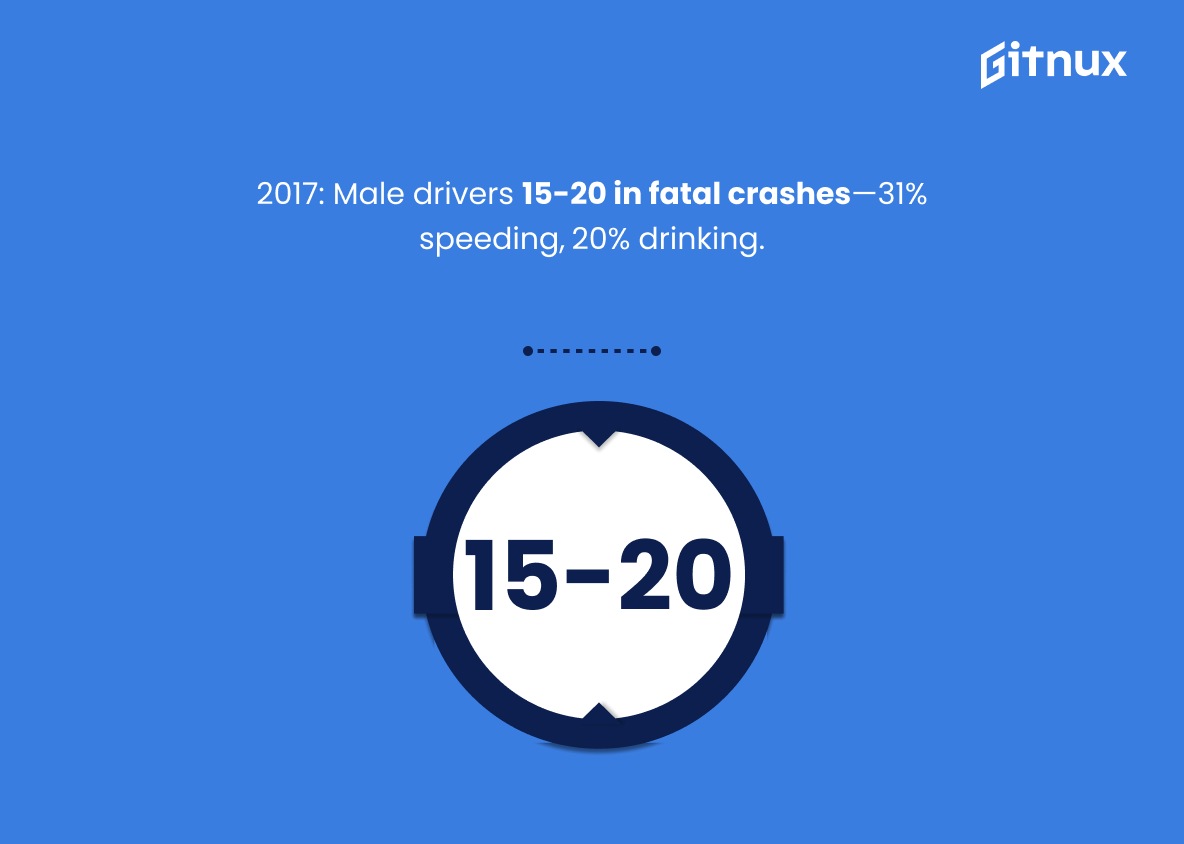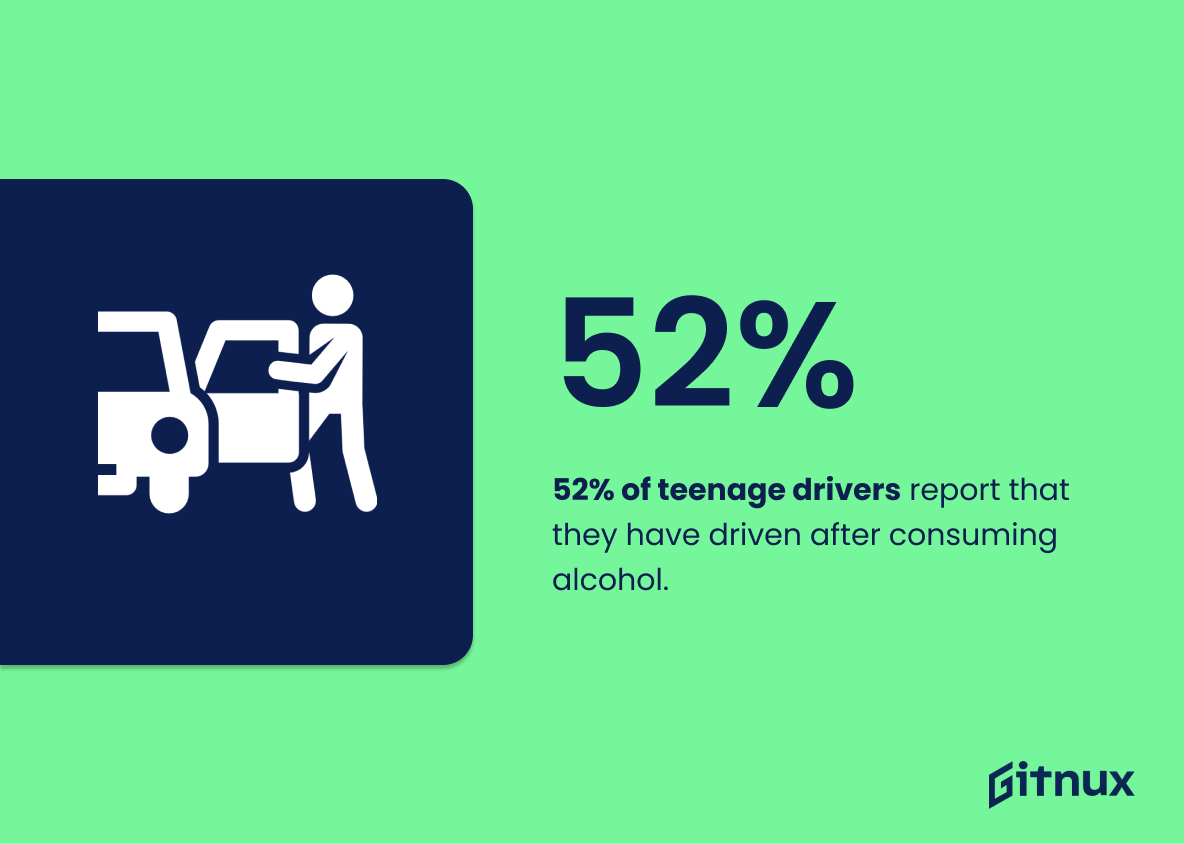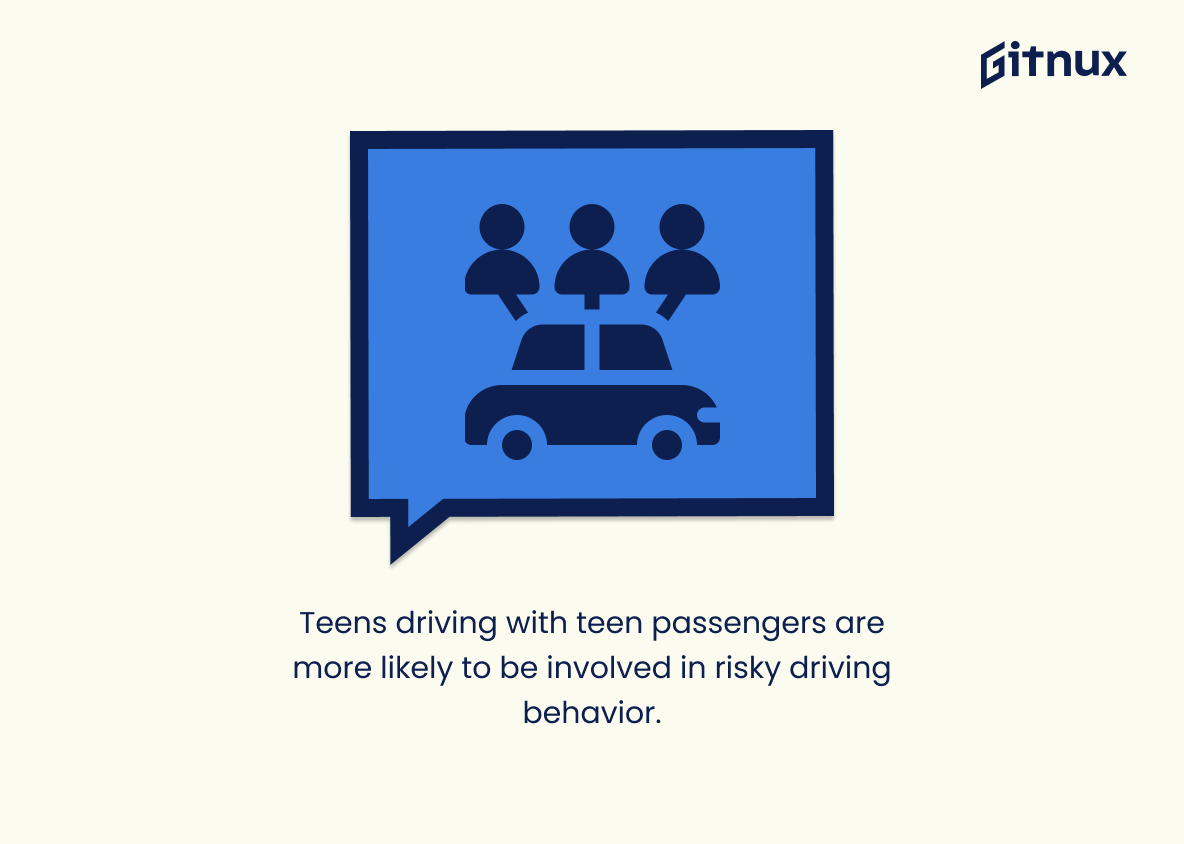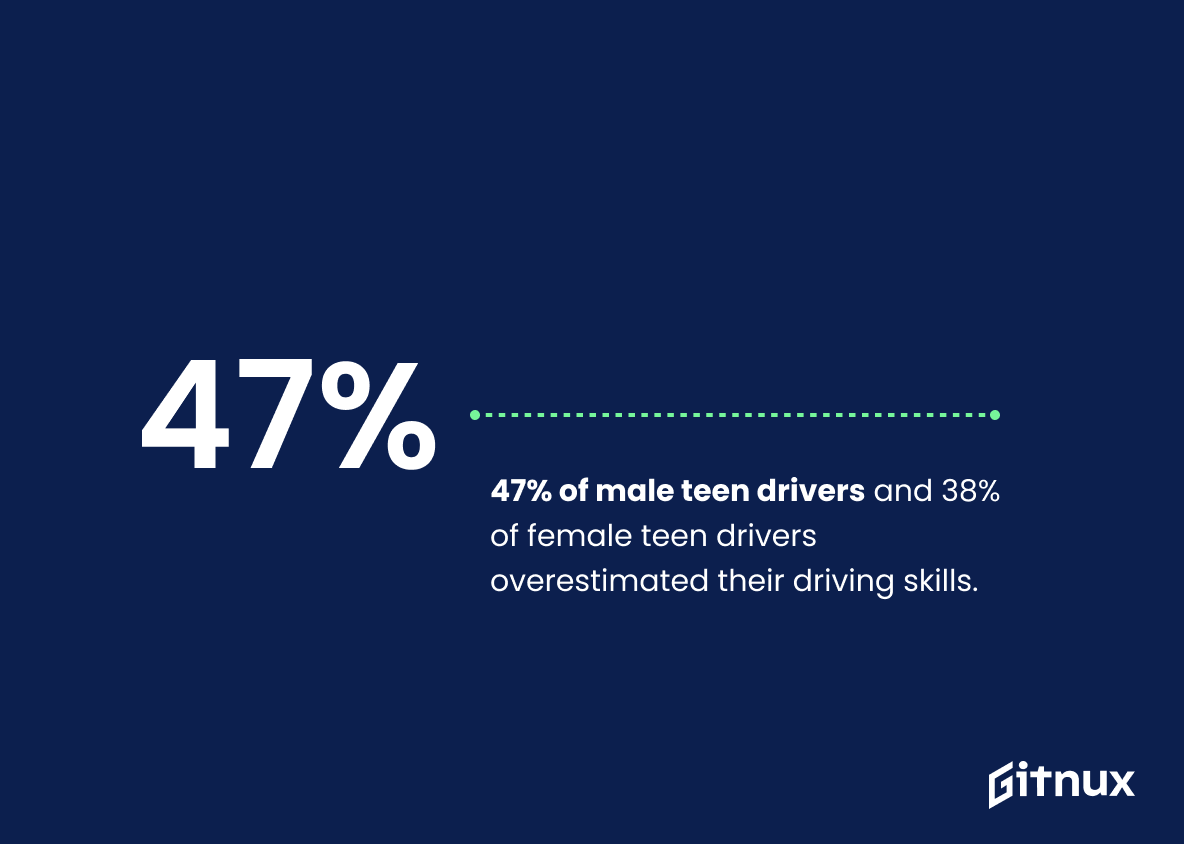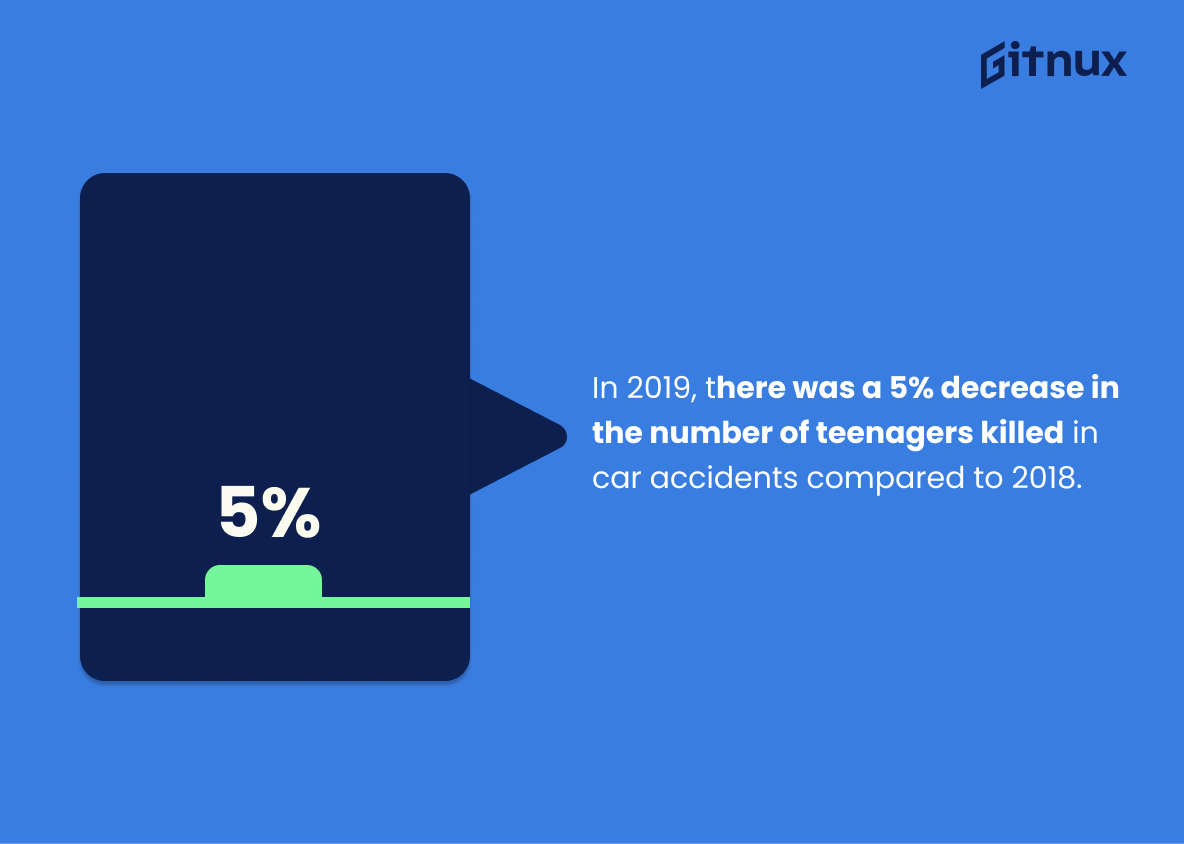Navigating the open road for the first time is a rite of passage every teenager eagerly looks forward to. However, teen driving is an important topic that often intertwines with the threads of excitement and independence with cautionary tales of road safety. With teenagers being more prone to vehicular mishaps, it is imperative to educate ourselves and our young ones about the vital statistics related to teen driving. This blog post peels back the layers on teen driving statistics, providing a comprehensive contemplation on the dangers, the contributing factors, and the actions we must undertake to establish safer driving environments for our nation’s youth. Buckle up as we cruise through a number of crucial insights that could potentially revamp our road safety consciousness.
The Latest Teen Driving Statistics Unveiled
In 2017, there were 2,364 teen drivers (15 to 18 years old) involved in fatal crashes.
Highlighting such a sobering statistic in a blog post about Teen Driving Statistics serves as a wakeup call to the reality of the situation. The sheer numbers eloquently underline the grave risks associated with teenage driving, sparing us the need for subjective commentary. This raw data, reflecting the heartbreaking loss of 2,364 young lives in 2017 alone, sets the stage for a full-fledged discussion on the necessity of improved education, stricter regulations, and more responsible behavior behind the wheel. It forms a call to action in the face of a tragic trend that should not be simply accepted as a norm, but should be zealously fought against. The statistic stands as an urgent reminder and a poignant appeal to work diligently towards promoting safer driving habits among our youth.
16 to 19 year-olds are three times more likely than drivers over 20 years old to be in a fatal car crash.
With the thrilling rite of passage that driving represents to teenagers, it’s shocking yet crucial to underscore the sobering fact: teens at the precipice of adulthood, those aged 16 to 19, face triple the risk of experiencing a fatal car crash compared to their more seasoned counterparts over 20 years of age. This startling comparison isn’t merely an appeal to fear, it’s a call to arms. The reality this figures illustrates acts as a stark reminder that novice drivers aren’t just battling inexperience behind the wheel, but statistically higher odds of life-ending hazards. Heightened awareness, stringent driver education, and vigilant parental guidance can hopefully transform this painful statistic into a catalyst for safer roads and safeguarded young lives in the future.
Each year, drivers under the age of 18 are involved in 900,000 crashes.
Painting a clearer picture of teen driving scenarios, this overwhelming number of 900,000 crashes involving underage drivers annually uncovers a significant concern. It accentuates the urgent necessity for better teen driver education, heightened precautions, and strategic policy interventions. This figure plays a crucial role in the blog post about Teen Driving Statistics, lighting up a beacon of attention towards an alarming reality. In essence, these are not merely numbers, but a call for improvements in promoting safer driving habits among teens.
According to a study, teen drivers are more likely to take risks like speeding or not wearing a seat belt after 6 months of driving.
Highlighting this particular statistic provides a critical checkpoint in the narrative of Teen Driving Statistics. It underscores a stunning transformation period in adolescent driving behavior that coincides with six months of road experience. Here, the false confidence and risky habits such as speeding or neglecting seat belts often surface, portraying a growing concern for road safety authorities. The statistic is not merely a number; it’s a litmus test denoting the urgency of strategic intervention like continuous monitoring, post 6-months driving education, or stricter punishment policies to curb potential risks, hence making our roads safer.
As per data from 2016, the motor vehicle death rate for male drivers aged 16-19 was twice that of female drivers of the same age.
Spotlighting the worrying revelation from the 2016 data, it sprouts a glaring disparity in the motor vehicle death rates between male and female teen drivers. This insight isn’t merely a testament to the gender differences in driving habits, but it holds a pertinent relevance in the discourse on teen driving safety. The notably higher death rate among young male drivers may flag potential areas needing intervention, be it in terms of safer driving education, targeted campaigns, or policy adjustments. In drawing attention to such statistics in a blog post dedicated to teen driving, the groundwork for an informed conversation to promote enhanced safety measures among the more vulnerable demographic – teen male drivers – can be laid.
In 2019, an estimated 258,000 teens were treated in emergency departments for injuries related to motor vehicle crashes.
Unveiling the startling reality on the roads, the figure pointing at 258,000 teens succumbing to motor vehicle crash-related injuries and landing in emergency departments in the year 2019 alone, thrusts a critical spotlight on the perils faced by youthful drivers. Such gripping data peels back the layers on one of the key threats our young drivers face today, sketching an alarming portrait of the tangible, often painful, consequences that warrant undivided attention in any exploration of teen driving statistics.
This unsettling snapshot emphasizes the urgency and necessity of proactive, comprehensive approaches to educating and preparing our teens for the trials of the road. It fervently underlines the compelling need for innovative safety measures, strategic interventions, as well as more stringent regulatory standards to ensure safer, more confident navigation of the uncertain pathway that is teen driving.
Teenage drivers with teenage passengers are at a higher risk of getting into fatal car accidents.
Painting a vivid picture of the risks accompanied, the statistic about teenage drivers with teen passengers being at a higher risk of fatal accidents serves as an undeniable eye-opener. Under the spotlight of a blog about teen driving statistics, this indispensable piece of data transforms from mere numbers to valuable information, going beyond the value of shock and awe. It not only raises awareness about the hazardous combination of inexperience and distraction but also magnifies the pressing issue of advocating for more stringent protocols regarding teenage driving and passenger regulations. It ultimately appeals to both the cognitive and emotional aspects of readers, thereby bringing attention to the urgency of finding effective preventive measures for these potentially deadly incidents and cultivating more responsible, safe driving behaviors among teenagers.
The fatal crash rate per mile driven for 16-19 years olds is nearly three times the rate for drivers aged 20 and older.
Shining a spotlight on the chilling statistic that teenagers aged 16-19 encounter fatal crashes nearly three times more often than drivers over 20, illuminates the perils of novice driving. This grim reality, subtly woven into the fabric of teen driving statistics, underscores the importance of stringent vehicular safety measures, comprehensive driving education, and strict adherence to traffic rules for the young brigade. The stark disparity in fatal crash rates accentuates the urgent need for rigorous interventions to curb this rising tide of road tragedies involving teen drivers. Laced with an undeniable urgency, this statistic serves as a powerful wakeup call in discussions centered around teen driving.
In 2018, teens ages 15-19 were 2.5 times more likely to be involved in a fatal crash than middle-aged drivers.
Imagine driving down the road, the person behind the wheel could be anyone: an experienced, seasoned traveller of roads or a young, enthusiastic teenager. The risk associated with each is substantially different, highlighted by an eye-opening statistic from 2018. Speaking volumes about the disparity between age groups, it presents a shocking revelation that adolescents aged 15-19 were 2.5 times more likely to get entangled in a fatal crash compared to their middle-aged counterparts.
Unravelling the reality behind teen driving, this statistic places a magnifying glass over the potential risk that these young drivers pose – not just to themselves but other road users too. It underscores the urgency to enhance efforts in educating our budding drivers about safe driving habits, instilling caution and responsibility in their journey into adulthood.
Keeping this chilling fact in mind, it puts into perspective how age, experience and maturity play an integral role in shaping our proficiency on the roads, an essential point worth noting in our exploration of teen driving statistics. It’s easy to brush it off as just another statistic, but remember, these numbers represent lives, stories, which could have been prevented with better precautions.
In 2017, among male drivers aged 15-20 who were involved in fatal crashes, 31% were speeding at the time of the crash and 20% had been drinking.
Highlighting this statistic can significantly enhance our comprehension of youthful impulsiveness’ role in road accidents. It provides a chilling testament to the risks teen drivers face – not only from their inexperience but also from tendencies towards speeding and alcohol consumption. This statistic serves as a catalyst for dialogue on the importance of stricter enforcement and effective education about safe driving habits for teens, underscoring the urgency of the matter and need for action. A blog post about Teen Driving Statistics thus becomes more impactful, prompting readers to assess the gravity of the situation and potentially cultivate more responsible driving habits.
52% of teenage drivers report that they have driven after consuming alcohol.
Highlighting the alarming revelation that 52% of teenage drivers admit to having driven post alcohol consumption serves as a poignant wake-up call in the discourse on Teen Driving Statistics. It underscores the pressing need for significant reforms in education and enforcement related to teen drinking and driving. Furthermore, this statistic paints a grim picture of how teen decisions can drastically impact road safety, enabling the blog post to stress upon the importance of cultivating responsible driving habits among teens.
Teens driving with teen passengers are more likely to be involved in risky driving behavior.
Delving deeper into the realm of teen driving, this intriguing statistic uncovers an unsettling trend – a higher likelihood of reckless driving among teens who are accompanied by fellow adolescents. Paints a pretty revealing picture, doesn’t it? This statistic provides valuable insights for parents, educators, policymakers, and even teen drivers themselves, about the potential hazards lurking within a vehicle filled with teen passengers. From a safety perspective, understanding these risk factors can help forge effective strategies, promote comprehensive driver education, and cultivate more responsible road behaviors. In essence, it’s not just a statistic – it’s a powerful impetus to rally action and enhance road safety for our young drivers.
47% of male teen drivers and 38% of female teen drivers overestimated their driving skills.
Highlighting these numbers underscores a critical terrain of adolescent overconfidence that necessitates focus in discussions on teen driving statistics. The fact that almost half of male teen drivers and over a third of female teen drivers overestimate their driving skills paints a cautionary tale about the youthful illusion of invulnerability. As the blogger unearths these figures, it offers an understandable explanation for high accident rates among teen drivers, underscoring the need for more effective education and training programs to tackle their miscalibrated self-perception and increase their awareness of driving risks.
In 2019, there was a 5% decrease in the number of teenagers killed in car accidents compared to 2018.
Highlighting the notable dip of 5% in the teen fatalities in car accidents from 2018 to 2019 adds a silver lining to an otherwise somber topic of Teen Driving Statistics. Measuring the success of safety programs implemented for adolescents, this figure underscores the potential of effective interventions to bolster road safety for the youth. In the grand narrative of this blog post, it serves as a testament to progress and a beacon of hope, pushing us to not merely conceive safer roads as a lofty dream but a tangible reality within grasp.
Almost half of all teenage car accidents occur at night.
Painting a vivid picture of the nocturnal danger that envelops our young drivers, this startling statistic serves as a stark reminder of the risky reality they navigate. The ebony cloak of nightfall, it seems, worsens the already intricate endeavour of teenage driving, pulling a menacing 50% of these untoward incidents under its obsidian wing.
In the context of an eye-opening blog post on Teen Driving Statistics, it accentuates the critical need for increased supervision, improved driver education focusing on nighttime driving skills and potent regulations to safeguard our youth against the predatory clasp of nighttime accidents. The figure highlights the paradoxical beauty and peril of the night, reinforcing the urgency to empower our teens to cruise safely through its clandestine challenges.
Conclusion
Teen driving statistics highlight a pressing issue that requires concerted efforts from all stakeholders. As young drivers navigate through their initial years of driving, it is essential for them, their parents, educators, policymakers, and the broader community to recognize and address the risks involved. Encouraging responsible driving habits, advocating for improved driver education, and supporting laws that limit high-risk situations can significantly reduce the alarming rates of teen accidents on the roads. Indeed, by working together, we can create a safer environment for our young drivers, contributing to the overall safety of our roads.
References
0. – https://www.www.insurethebox.com
1. – https://www.www.sciencedaily.com
2. – https://www.www.nhtsa.gov
3. – https://www.www.iihs.org
4. – https://www.www.cdc.gov
5. – https://www.aaafoundation.org

